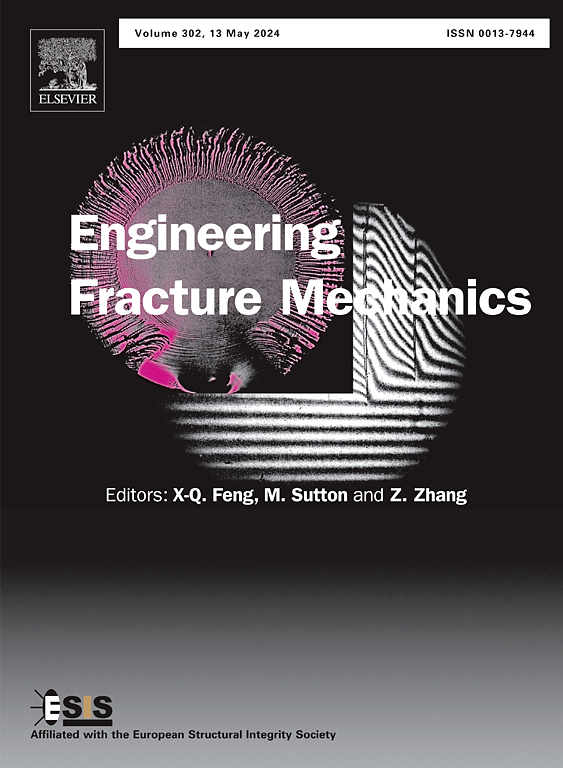Experimental study on mesoscopic fracture process and weakening mechanism of water on rockbursts
IF 4.7
2区 工程技术
Q1 MECHANICS
引用次数: 0
Abstract
Rockbursts induced by quasidynamic loads in deeply buried tunnels are highly susceptible to water and pose a critical engineering challenge. This study designs sandstone specimens with circular openings with various saturation levels to investigate the effects of water on rockbursts. Subsequently, rockbursts are triggered by quasi-dynamic loads in the true-triaxial loading state. The rockburst fracture process under different saturation levels and the fracture mode of the sidewall of the circular opening are analyzed using a microporous photography system and an acoustic emission (AE) monitoring system. The results indicate that water has a vital effect on the rockburst behavior of sandstone. Water had a dual effect on the fracture process of the sidewall during rockbursts, revealing a promoting effect on the tensile fracture before rockburst at lower saturation levels; however, a driving effect for shear fractures was observed when the saturation level exceeded 50%. The dual mechanisms of the fluid wedge and lubrication effects are considered critical factors in transforming the sidewall fracture mechanism before the rockbursts occur. However, water accelerates the macroscopic damage before the rockburst, but weakens the overall strength of the rockburst. The calculation results based on the particle image velocimetry (PIV) method showed that when the saturation level increased from 0% to 100%, the rockburst intensity decreased from moderate to slight. Finally, two mechanisms are summarized to explain the weakening effect of water on the severity of rockbursts: (i) the weakening effect of water on the ultimate energy storage capacity of sandstone units, leading to a decrease in the dynamic behavior of the initial failure; (ii) the increasing effect of water on plastic deformation enhanced the sustained energy dissipation behavior of sandstone units rather than promoting energy accumulation. This effect led to a decrease in the residual excess energy of sandstone under dynamic loads.
求助全文
约1分钟内获得全文
求助全文
来源期刊
CiteScore
8.70
自引率
13.00%
发文量
606
审稿时长
74 days
期刊介绍:
EFM covers a broad range of topics in fracture mechanics to be of interest and use to both researchers and practitioners. Contributions are welcome which address the fracture behavior of conventional engineering material systems as well as newly emerging material systems. Contributions on developments in the areas of mechanics and materials science strongly related to fracture mechanics are also welcome. Papers on fatigue are welcome if they treat the fatigue process using the methods of fracture mechanics.

 求助内容:
求助内容: 应助结果提醒方式:
应助结果提醒方式:


